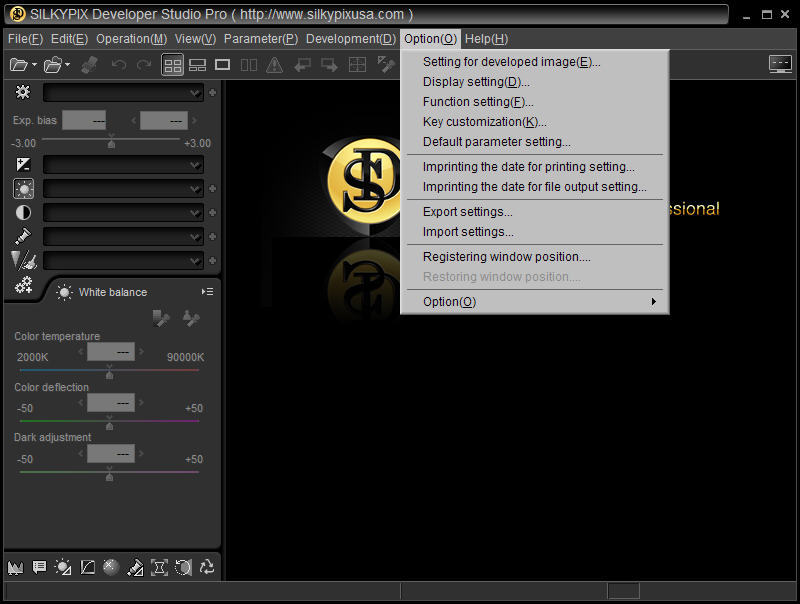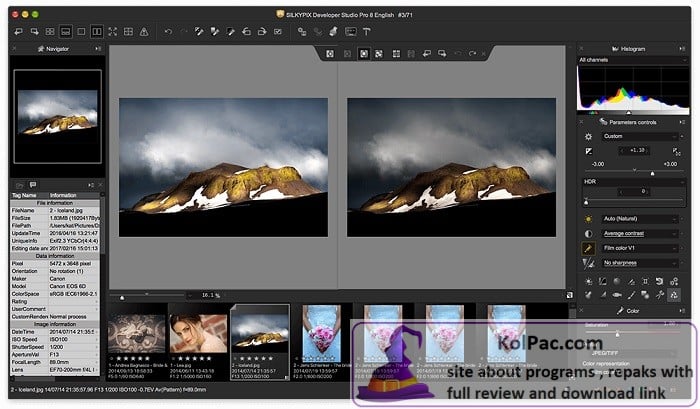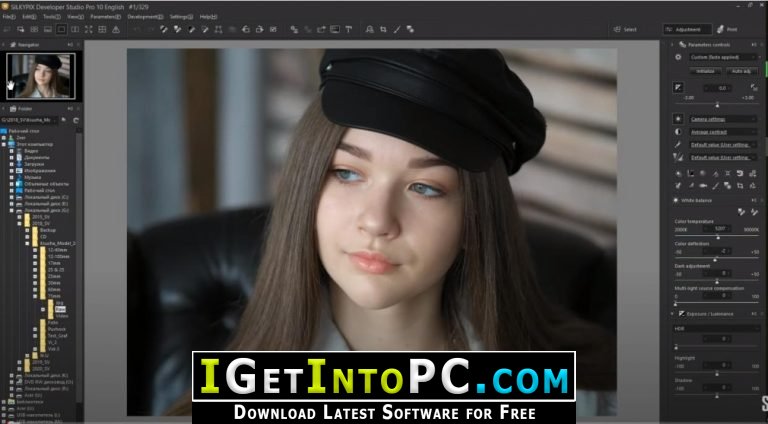
- SILKYPIX DEVELOPER STUDIO 4.1 MOVIE
- SILKYPIX DEVELOPER STUDIO 4.1 UPGRADE
- SILKYPIX DEVELOPER STUDIO 4.1 ISO
- SILKYPIX DEVELOPER STUDIO 4.1 PLUS
SILKYPIX DEVELOPER STUDIO 4.1 ISO
The new sensor should deliver improvements to image quality in terms of better noise handling at high ISO settings and Panasonic claims the TZ70 has faster autofocusing in dim lighting and enhanced shadow recovery in JPEGs. Top view of the Lumix DMC-TZ70 with the zoom lens extended.

Changes to the body design are largely cosmetic, although the larger grip moulding makes the new camera more comfortable to hold and operate than the TZ60. Aside from the change in sensor resolution (see below), most other features of the camera are either unchanged or tweaked a little. However, sensitivity defaults to ISO 100 and is not adjustable. The only way to access longer exposure times is via the Starry Sky mode, which lets you select from 15-second, 30-second and 60-second exposure times. The slowest shutter speed available in the S shooting mode is four seconds.
SILKYPIX DEVELOPER STUDIO 4.1 MOVIE
For snapshooters, the full auto shooting mode is augmented by easily-selected scene and creative filter options, most of which can be applied to both still and movie capture.

Fine and Standard resolution settings are available for the JPEG files.įaster autofocusing is always welcome, although we didn’t notice a huge improvement over the TZ60’s lock-on speeds, particularly in dimly-lit situations.
SILKYPIX DEVELOPER STUDIO 4.1 PLUS
The camera can also record stereo pairs for 3D viewing, using a dedicated 3D Photo mode setting, which simultaneously saves 3D still picture data in MPO format plus the stereo pair of images in JPEG format. All raw files are recorded with the maximum resolution for the selected aspect ratio. Raw file support, which was added with the TZ60, is retained in the new model and users can combine raw files with JPEGs and choose Fine or Standard quality for the latter. Like previous TZ models, the TZ70 is designed primarily for travellers and serves as an excellent ‘go-anywhere’ camera. It will be offered in silver and black or red and black. The new camera is very slightly larger and marginally heavier than its predecessor but remains relatively light and is slim enough to slip into a largish shirt pocket. The two colour options for the Lumix DMC-TZ70. Although featuring the same Leica-branded, 30x zoom lens and having the same sized (6.17 x 4.55 mm) sensor, the resolution of the sensor has been reduced from 18 megapixels in the TZ60 to just 12 megapixels in the new camera, allowing Panasonic to promote the TZ70 as having a ‘high-sensitivity, large pixel sensor’.
SILKYPIX DEVELOPER STUDIO 4.1 UPGRADE
Panasonic’s just-released DMC-TZ70 is a relatively minor upgrade to its predecessor, the DMC-TZ60.

Integrated Wi-Fi carries over from the TZ60 largely unchanged.Ĭonvenience is the main factor that will influence potential purchasers of this camera. The 30x zoom lens is the same as the lens in the TZ60 and the same digital zoom functions are supported. These include the iHandheld Night Shot and iHDR (high dynamic range), which record a series of shots and combine them to reduce noise and camera shake or expand the dynamic range in a shot. Other handy functions include a Time Lapse Shot mode, which can be used to create video animations in playback mode, and a couple of useful multi-shot modes. The camera can also record stereo pairs for 3D viewing, using a dedicated 3D Photo mode setting, which simultaneously saves 3D still picture data in MPO format plus the stereo pair of images in JPEG format.įine and Standard resolution settings are available for the JPEG files.įaster autofocusing is always welcome, although we didn’t notice a huge improvement over the TZ60’s lock-on speeds, particularly in dimly-lit situations.įor snapshooters, the full auto shooting mode is augmented by easily-selected scene and creative filter options, most of which can be applied to both still and movie capture.


 0 kommentar(er)
0 kommentar(er)
